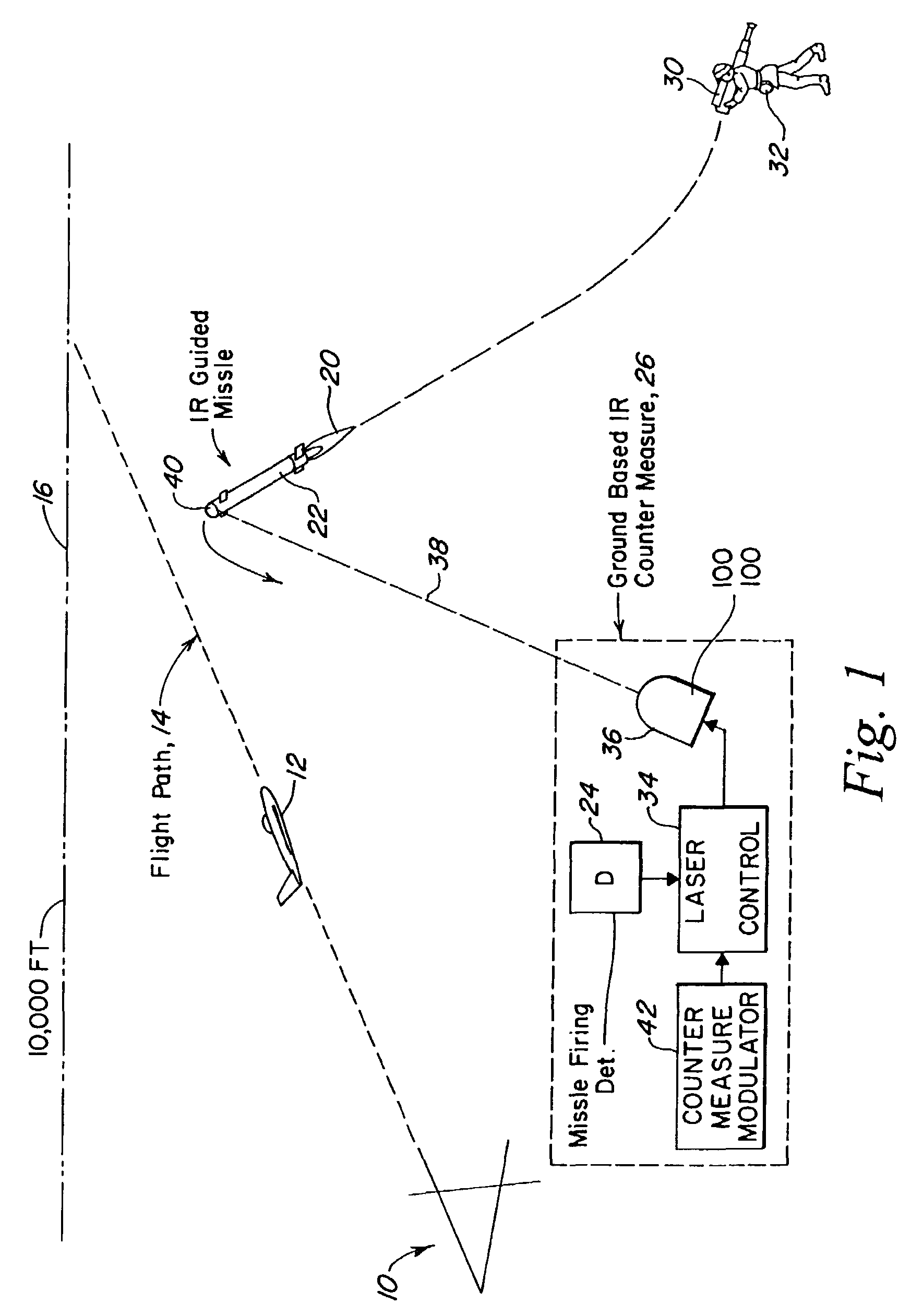Back illumination method for counter measuring IR guided missiles
a counter-measures and guided missile technology, applied in the field of countermeasure techniques, can solve the problems of ineffective off-axis illumination of the missile seeker, particularly vulnerable to shoulder-launched missiles, and commercial aircraft and other aircraft which are not, and achieve the effect of eliminating passengers' perceptive problems, reducing the cost of operation, and reducing the number of missiles
- Summary
- Abstract
- Description
- Claims
- Application Information
AI Technical Summary
Benefits of technology
Problems solved by technology
Method used
Image
Examples
Embodiment Construction
[0038]Referring now to FIG. 1, in a typical airfield scenario for about an airfield 10, an aircraft 12 is shown taking off along a flight path 14 until such time as it reaches an altitude of 10,000 feet as illustrated by dotted line 16. It is noted that for most shouldered-launched IR guided missiles, their altitude limit is approximately 10,000 feet.
[0039]In order to countermeasure an infrared guided missile the subject system, the plume 20 from an IR guided missile 22 is detected by a detector 24 associated with a ground-based IR countermeasure jamming pod 26. The detector may either be an infrared detector or an ultraviolet detector, or may be any detector which detects the deployment of any such missiles. As can be seen, the missile is shown as being shoulder-launched at 30 by an individual 32 who aims the missile 22 in the direction of the aircraft target sought to be destroyed.
[0040]The launching of the missile having been detected by detector 24 activates a laser pointing con...
PUM
 Login to View More
Login to View More Abstract
Description
Claims
Application Information
 Login to View More
Login to View More - R&D
- Intellectual Property
- Life Sciences
- Materials
- Tech Scout
- Unparalleled Data Quality
- Higher Quality Content
- 60% Fewer Hallucinations
Browse by: Latest US Patents, China's latest patents, Technical Efficacy Thesaurus, Application Domain, Technology Topic, Popular Technical Reports.
© 2025 PatSnap. All rights reserved.Legal|Privacy policy|Modern Slavery Act Transparency Statement|Sitemap|About US| Contact US: help@patsnap.com



